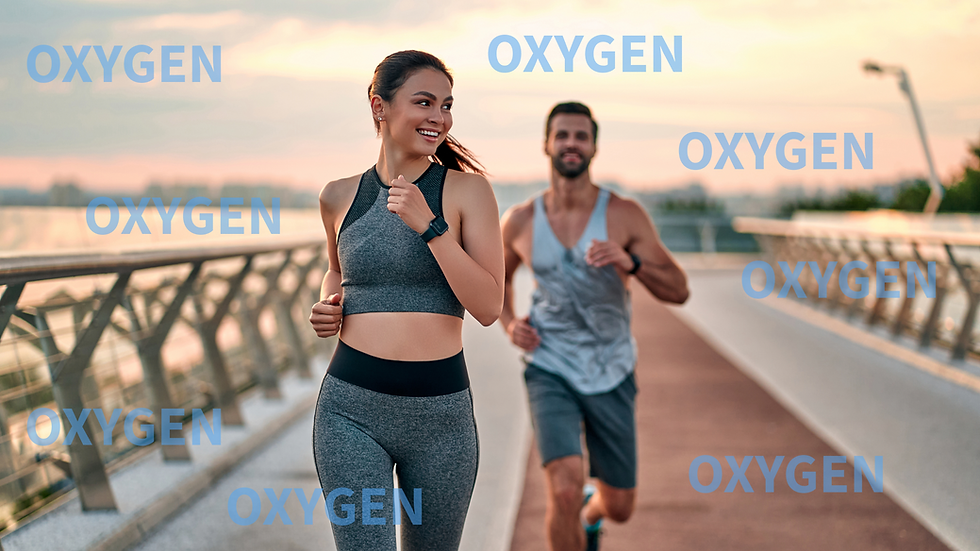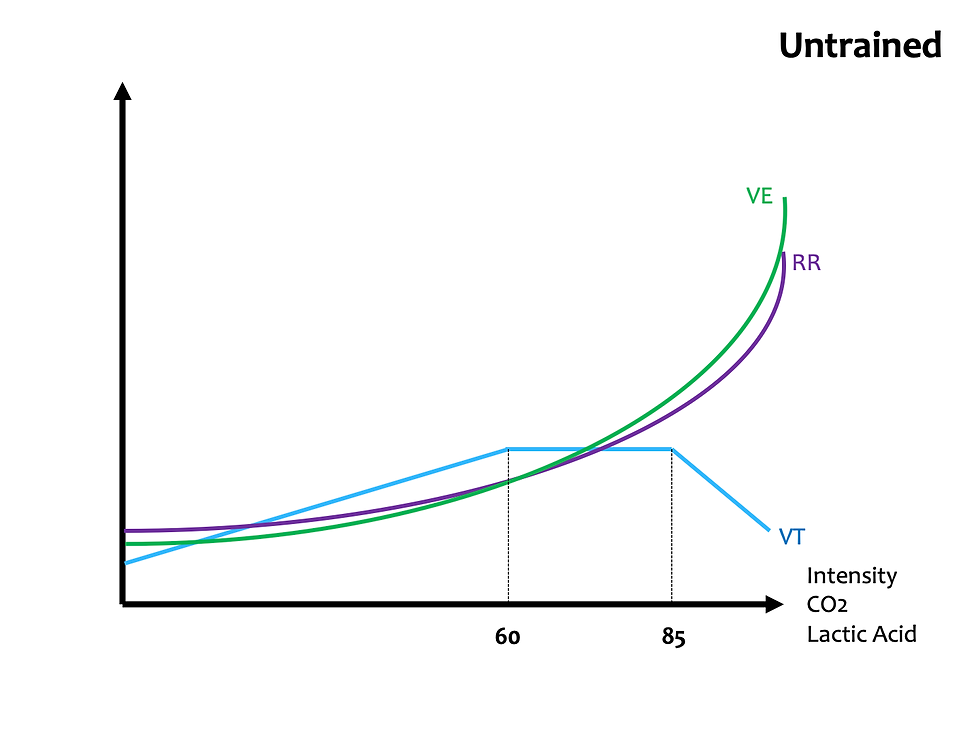UNTRAINED VS WORLD CHAMPION

At rest, during exercise, and maximal exercise, minute ventilation is regulated to meet the oxygen supply and carbon di oxide removal needs of the body. Minute ventilation is achieved by tidal volume and respiratory rate multiplied, where respiratory rate reacts to tidal volume as its compensator. This means that respiratory rate changes according to changes in tidal volume, in order to achieve the minute ventilation adequate for the metabolic demands of skeletal muscles and other active tissue/organs.
Rest is defined as 0% intensity while maximal exercise is defined as 100% intensity. Anything in between is by definition sub-maximal exercise. Minute ventilation increases in a non-linear way from rest to maximal exercise, in an almost perfect 1:1 ratio with the creation of carbon di oxide. We know that breathing is regulated by carbon di oxide as the prime stimulus of the pneumotaxic center of the brain. Breathing is first and foremost regulated according to how much carbon di oxide is in the body.
Advertisement
In an untrained person, minute ventilation increases from 6-8 L/min at rest to about 145 L/min at maximal exercise. Tidal volume increases between rest and about 60% intensity, then reaching its maximal volume. Within the same range of intensity, respiratory rate is also increasing.
Between 60% intensity and about 85% intensity, tidal volume remains maximal, while respiratory rate continues to increase at a steeper pace than before, to achieve a growing minute ventilation; respiratory rate is compensating for tidal volume's inability to increase anymore, since minute ventilation must continue to increase.
Between 85-100% respiratory rate is accelerated even more in order to supply oxygen ever faster in order to prevent lactic acid creation as much as possible. Yet, the faster we breath, the lesser time is left to inflate the lungs with air, causing tidal volume to decrease. This represents the need to decrease respiratory efficiency by increasing respiratory rate and decreasing tidal volume in order to prevent excessive lactic acid via the "pyruvate junction".
It important to understand that both minute ventilation and respiratory mimic the change in carbon di oxide concentrations, which mimics the change in lactic acid production.
In an aerobically trained world champion, minute ventilation increases from 6-8 L/min at rest to about 210 L/min at maximal exercise. Tidal volume increases between rest and maximal intensity in three different paces; pace 1 is between 0-70% intensity, pace 2 is between 70-90% intensity, and pace 3 is between 90-100% intensity. Similar to the untrained, a world champion's tidal volume decreases as respiratory rate becomes to fast to allow the lungs to inflate to the maximum.
In the world champion as in the untrained, both minute ventilation and respiratory mimic the change in carbon di oxide concentrations, which mimics the change in lactic acid production. The untrained person's tidal volume increases from about 550 mL at rest to about 3,000 mL at maximum exercise, while the world champion's tidal volume increases from 550 mL at rest to 4,000 mL at maximal exercise.
The untrained person's respiratory rate increases from 12-15 bpm at rest to about 48 bpm at maximal exercise, while the world champion's heart rate increases from about 11-14 bpm at rest to about 53 bpm at maximal exercise.
Graph one: changes to minute ventilation, tidal volume, and respiratory rate from rest to maximal exercise in the untrained.

Advertisement
Graph two: changes to minute ventilation, tidal volume, and respiratory rate from rest to maximal exercise in the well aerobically trained

.



Comments